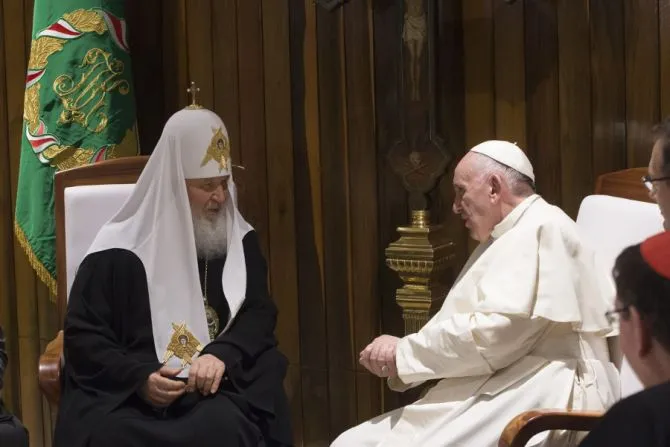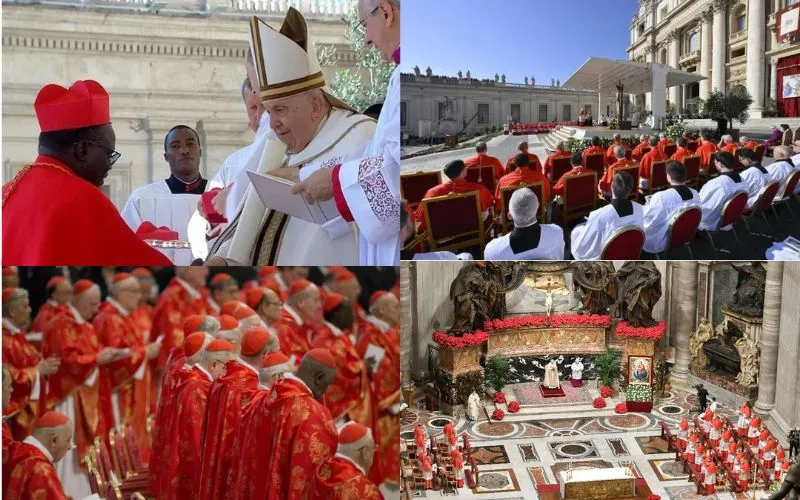The Holy See’s success followed 75 years of uninterrupted diplomatic relations with the island. Nothing in the Church happens suddenly; everything is the fruit of long work.
Thus, from the travels, one comes to understand diplomatic work.
Cuba represents a new impetus for pontifical mediations, as seen in Venezuela at the direct request of the parties involved, and also in Nicaragua, where the diplomatic line now seems to be one of remaining a step behind. The decision not to appoint a new nuncio after the sudden expulsion of Archbishop Waldemar Sommertag from Managua was a move to avoid having to dialogue with the government of Managua for the approval of a diplomat while maintaining a presence in the country.
In the Vatican’s problematic relations with China, the goal has been to keep the lines of communication open. Pope Francis wanted an agreement to appoint bishops, which was signed in 2018 and renewed twice for two years. So far, only six bishops have been appointed after the deal, while Beijing seems to want to push religions (and not just Catholicism) more and more into so-called “sinicization.”
(Story continues below)
The object, however, is to have an agreement, even if imperfect, to have a basis on which to negotiate.
Wars in the world
The criterion of dialogue at any cost was the basis of the pope’s diplomatic efforts over the war in Ukraine. The Holy See has been following the situation in Kyiv since the Maidan protests of 2014. Pope Francis has launched a special collection, the Pope for Ukraine. At the same time, in 2019, he wanted an interdicasterial meeting in the Vatican with the synod and the bishops of the Ukrainian Greek Catholic Church.
However, Pope Francis wanted to keep the channels open with Moscow, so much so that his first instinct at the outbreak of war was to go personally to the embassy of the Russian Federation to try to speak with President Vladimir Putin.
Pope Francis has repeatedly underlined that many territories are engaged in what he calls “a piecemeal world war.” His visit to Iraq in 2021; his frequent mention of Yemen; and Syria, whose nuncio was named a cardinal by the pope, are examples of his efforts in these troubled regions.
The diplomacy of prayer
Syria is an example of Pope Francis’ “diplomacy of prayer” because it was due to the situation in Syria that Pope Francis, in September 2013, proclaimed a day of fasting and prayer for Syria and the Middle East. And a day of prayer for peace, declared in the Vatican Gardens in June 2014, was used as a diplomatic lock-pick to create a meeting point. The prayer retreat with the South Sudan leaders in 2019 was part of this effort.
In Pope Francis’ vision, religions must meet to create the common good. Interreligious dialogue is part of diplomacy. The restored relations with the al-Azhar University in Cairo, one of the major centers of Sunni Islam, can be read in this light.
During his trip to Egypt in 2017, the pope participated in the International Peace Conference organized by the same institution. He reiterated that there could be no violence in the name of God.
A desire for interreligious dialogue marked the decision to travel to the United Arab Emirates as well as that of going to Morocco in 2019. In Abu Dhabi, the pope signed with the Grand Imam of Al Azhar Ahmed al-Tayyib a declaration on human fraternity that set guidelines for diplomacy, so much so that the pope has given a copy to all the heads of state who have visited him.
The guidelines were put into practice during Pope Francis’ trip to Iraq, which culminated in the meeting with the Grand Ayatollah al Sistani and with the other religions at the Plain of Ur (but without Jewish representatives, which perhaps seemed like excessive diplomatic prudence). It was also evident in Pope Francis’ last trip to the Gulf, in Bahrain, in 2022.
The theme of fraternity then resulted in an encyclical, Fratelli Tutti, developed during the pandemic and now part of the diplomatic instruments of the Holy See and presented on April 15, 2021, at a high-level event at the United Nations.
The duty to protect
In short, you must, first of all, prove that you are friends for diplomacy to proceed effectively. This was the line dictated by Cardinal Pietro Parolin in September 2014 when, as secretary of state, he participated in the United Nations General Assembly. The key of his speeches was the “duty to protect.”
The Holy See, in recent years, has applied this duty to protect the environment (just think of the encyclical Laudato Si and the commitment to a climate agreement), to persecuted minorities (thanks to the diplomatic commitment of the Holy See for the first time in the European institutions, talks began about the persecution of Christians), to people who are victims of human trafficking (perhaps the central theme of Pope Francis’ diplomatic activity), to migrants (Pope Francis has allocated an entire office of the Roman Curia, under its direct dependence, on the migrant emergency).
The entire diplomatic effort of the Holy See in 2018 was then dedicated to the issue of migrants, working on the global agreement on migration discussed in Marrakech on Dec. 10-11, 2018.
The diplomatic network
In recent years, the diplomatic network of the Holy See has grown. Three nations joined the diplomatic network of the Holy See during Francis’ pontificate. In 2016, Mauritania established full diplomatic relations. In 2017, Myanmar forged ties with the Holy See, thus paving the way for the pope’s next trip to the country. And, in February, the Holy See and Oman entered diplomatic relations.
The Holy See now has diplomatic relations with 184 nations around the world. And Vietnam, where the Holy See currently has a nonresident representative, is expected to be soon added to these nations.
The next challenges
In addition, throughout his pontificate, Pope Francis has often warned against ideological colonization and has defended indigenous cultures in various speeches, especially in his travels to Latin America and his most recent trip to Canada.
And it can already be foreseen that the pope’s forthcoming diplomatic speeches may broach new topics, such as artificial intelligence, which is increasingly becoming the focus of activities.
Andrea Gagliarducci is an Italian journalist for Catholic News Agency and Vatican analyst for ACI Stampa. He is a contributor to the National Catholic Register.








